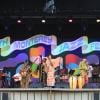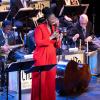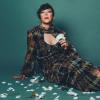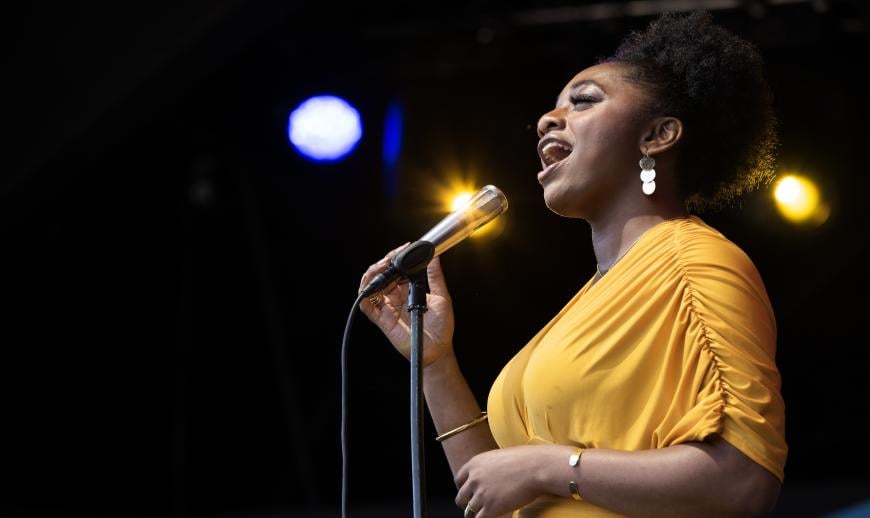
In the midst of her Monterey Jazz Festival performance on the arena stage last month, Dianne Reeves launched into “Someone to Watch Over Me,” skipping Ira Gershwin’s yearning verse to soar directly into the beseeching chorus.
She didn’t just put her inimitable stamp on a standard interpreted by almost every major jazz vocalist who came before her. Evoking the nonpareil triumvirate of Ella Fitzgerald, Sarah Vaughan, and Carmen McRae, Reeves seemed to summon the matriarchs who embraced her as a rising generational talent in the mid-1980s.
Reeves is only 66, but she’s been preternaturally poised since she became the first vocalist signed by the revived Blue Note Records label, and she gracefully wore the mantle of elder maestra on a MJF program marked by exceptional younger artists. Most conspicuous was Samara Joy, the 23-year-old phenomenon who might be jazz’s best bet this decade to attract a following far beyond its diminutive niche.
But in thinking about the festival over the last few weeks, what has struck me as much as Joy’s transcendent voice has been the sonic and stylistic diversity of her peers. The sheer profusion of approaches and sounds that jazz vocalists are exploring makes this moment feel particularly promising.
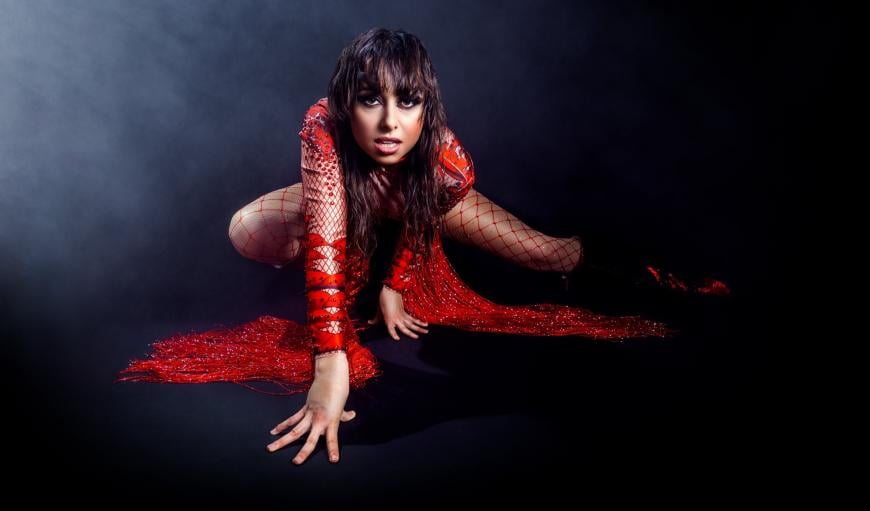
Veronica Swift wasn’t at Monterey this year, but she was the talk of the festival in 2022, when she introduced her new pandemic-engendered act, which combines the sequined wardrobe of glam rock with a kaleidoscopic array of musical influences, including funk, vaudeville, bossa nova, bebop, blues, and bel canto.
A prodigy who was a polished improviser by the time she reached middle school — her mother is the excellent but overlooked jazz vocalist Stephanie Nakasian, and her father was the late bebop pianist Hod O’Brien — Swift performed at the SFJAZZ Gala in May, when she delivered a stunning, slow-burning rendition of “This Bitter Earth.”
The 29-year-old powerhouse returns to the SFJAZZ Center’s Miner Auditorium on Oct. 12 (and plays Malibu’s Pepperdine University on Oct. 17) in a very different mode, introducing the encompassing approach she calls “transgenre.” Describing the sound as one step in her evolution rather than a final destination, Swift introduced her far-flung repertoire on an eponymous Mack Avenue album released last month, a project she co-produced with Mariano Aponte and drummer Brian Viglione of the punk cabaret duo The Dresden Dolls.
At the SFJAZZ show, Swift will perform with Blood, Sweat & Tears keyboardist Adam Klipple, leading a quintet augmented by trombonist Adam Theis and his Jazz Mafia comrade Jonathan Seiberlich on tuba. She’s focusing on the new material, about half of which consists of her neon-lit reimaginings of standards, like a psychedelic blues take on Duke Ellington’s “Do Nothing Till You Hear From Me.” But she also interprets songs rarely tackled by jazz artists, like the Jerry Herman anthem from La Cage aux Folles, “I Am What I Am,” which could serve as her transgenre manifesto.
Swift foregrounds the funk submerged in the relentless industrial rock of “Closer” by Nine Inch Nails and sets Queen’s “The Show Must Go On” to a conga-driven Afro-Cuban beat. If there’s one tune that neatly encapsulates the essence of her transgenre sensibility, it’s Antônio Carlos Jobim’s “Chega de Saudade.” Liberating the melody from its lithe rhythmic setting, she and arranger Randy Waldman transform the bossa nova standard into an aria that serves as a vehicle for her bel canto vocals.
“This arrangement is an example of how my brain works, bringing my experience with coloratura to bossa nova,” Swift said. “Opera is a huge part of what I do, and I’m trying to bring it into the show where it doesn’t feel like a cabaret thing. I love Italian and French opera, and I was thinking, ‘Is there Portuguese opera?’ And then I thought about Jobim, and if you take out the rhythm and tempo from ‘Chega de Saudade,’ you can transport the melody and lyrics to Puccini and Verdi.”
If Swift is investigating a more-is-more aesthetic, what she describes as “addition, not subtraction,” Gretchen Parlato has distilled her sound down to a silvery essence, an approach deeply informed by the Brazilian songbook. She performed at Monterey with Benin-born guitarist and vocalist Lionel Loueke, a creative confidante since they were graduate students at the exclusive Thelonious Monk Institute for Jazz in Los Angeles two decades ago. The L.A.-based Parlato heads back north this week with Loueke for duo performances on Oct. 13 at San Jose’s Hammer Theatre Center (part of the Black Cab Jazz series), on Oct. 14 at The Studio for Stanford Live, and on Oct. 15 at Miner Auditorium.
At 47, Parlato is a mid-career master whose emergence in the early aughts changed the course of jazz vocals, via her own recordings and through her ubiquitous presence on projects by her peers, elders, and younger artists, including Esperanza Spalding’s breakthrough albums Chamber Music Society and Radio Music Society (from 2010 and 2012, respectively).
“She’s shaped a generation,” said singer Sara Gazarek, 41, who was studying at the University of Southern California’s Thornton School of Music when Parlato was at the Monk Institute. “There are so many young vocalists who’ve adopted her intimate, quiet, sensual approach to singing, which is not performative but still commanding. I love the music she’s making. It feels like her soul.”
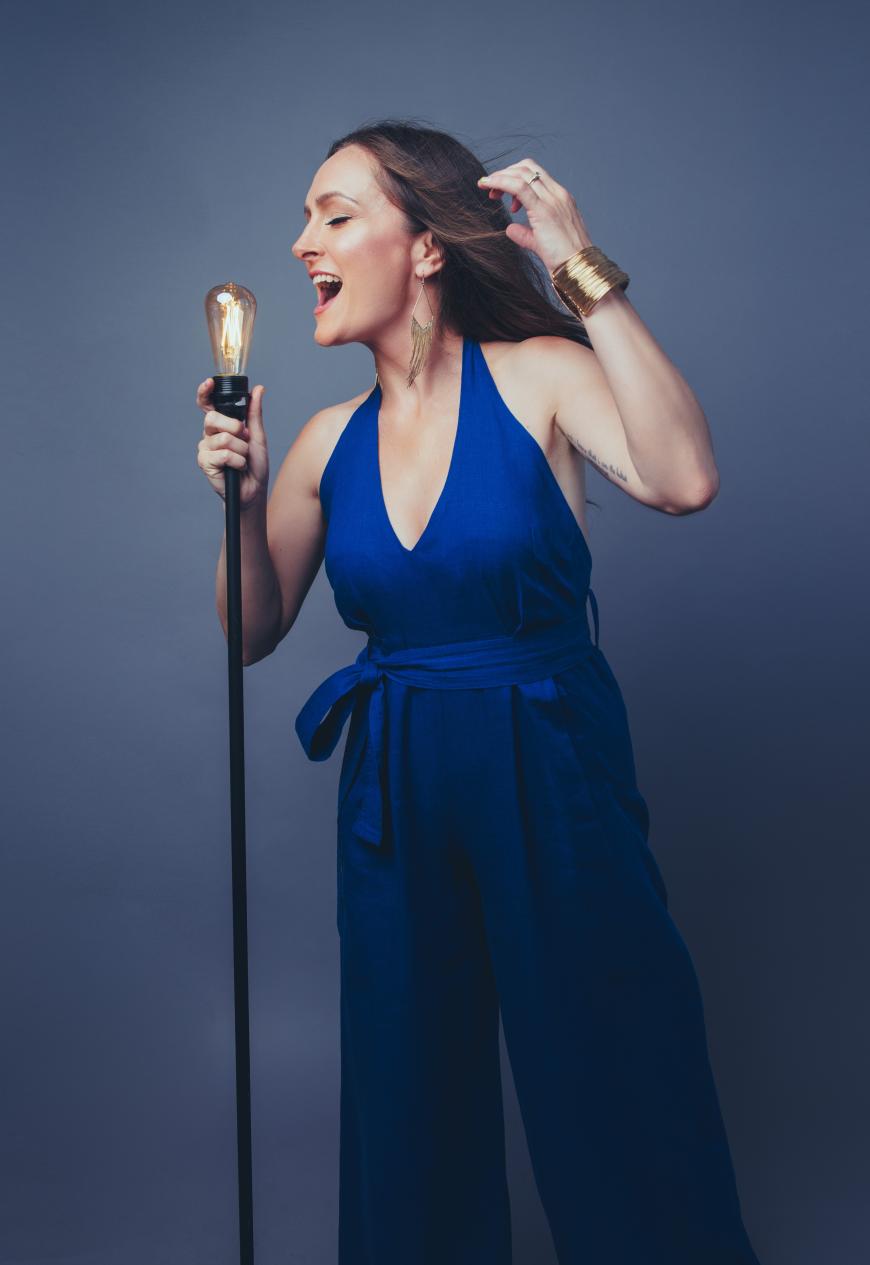
Gazarek is best known as a Grammy-nominated solo artist who’s released a series of excellent albums that alternate between original songs and standards. But she’s performing around the California in the coming weeks with a fascinating collective vocal quartet called säje (rhymes with beige), which also features the L.A.-based Erin Bentlage and the Seattle-situated Johnaye Kendrick and Amanda Taylor. While the group released its eponymous debut album last month, the ensemble made a splash when its first single, “Desert Song,” was nominated for a 2021 Grammy.
The group’s first extended tour includes performances at Santa Cruz’s Kuumbwa Jazz Center on Oct. 16, Sacramento’s Sofia on Oct. 17, Berkeley’s Freight & Salvage on Oct. 18, and Pleasanton’s Firehouse Art Center on Oct. 19. The quartet will be joined by drummer Quincy Davis and Oakland-reared bassist Amina Scott, “who played with us at our debut performance in 2020 at the Jazz Education Network Conference,” Gazarek said. Pianist/accordionist Gary Versace, a New York veteran who holds down the piano chair in the Maria Schneider Orchestra, rounds out the rhythm section. Säje also performs at Pepperdine on Oct. 22 and Los Angeles’ Lodge Room on Oct. 29.
The group’s debut album lays out a detailed roadmap for exploring new vocal territory. Rather than drawing on the intricate vocalese of the trio Lambert, Hendricks & Ross, which involved setting lyrics to solos from classic jazz recordings, säje’s music flows out of the contemporary instrumental jazz scene with lapidary arrangements that feature elusive, shimmering harmonies.
The quartet is state-of-the-art off the bandstand, too. Compare säje’s approach with the now-rare treatment that Samara Joy’s voluptuous talent has brought. Joy’s star turn, complete with a major label deal and representation by a high-powered booking agency, is a throwback to the pre-streaming age, when CD sales could generate real income. In contrast, the women of säje have very consciously set out to handle every aspect of the endeavor as “a wide-angle DIY ensemble,” Gazarek said.
“A lot of our music videos are edited, written, and arranged by us. We’re producers of the album, which we’re self-releasing. We’ve had a weekly business meeting, figuring out who’s doing what. Early on we got a grant from Patreon, which enabled us to work with a business coach.”
The rising generation of vocalists, led by Swift, Joy, and Jazzmeia Horn, is the last one that will have had direct contact with the singers shaped during the middle decades of the 20th century, like the miraculous Sheila Jordan, still touring the world at 94 (and closer to home, the great Mary Stallings, 84, who plays Keys Jazz Bistro Oct. 27–28). Reeves and Dee Dee Bridgewater are both in their prime, but they came of age in a post-Beatles world where jazz had faded as a presence in popular culture.
In a medium that depends upon artist-to-artist transmission, how can Gen Z jazz vocalists connect to the music’s roots? Gazarek will be one of the people shaping the new landscape, as she was recently hired by the Eastman School of Music to launch a jazz vocal program. She came up under Tierney Sutton at USC Thornton and went on to teach at her alma mater.
In starting to build the Eastman program, Gazarek is “looking at [her] experience and what has and has not served [her] in transforming from student to professor,” she said. “I’ve devoted my life to this Black American cultural art form, and my main goal is to debunk the myth of this disconnection between vocalists and instrumentalists. That’s the hill I’m willing to die on.”
There’s no need to expire before catching some excellent jazz vocalists. Here are a few other artists to catch in the Bay Area this month:
Los Angeles song stylist Judy Wexler has made a habit of honing less-trod material, and her latest album, Back to the Garden, mines the singer-songwriters of the 1960s for overlooked gems. She performs at Mr. Tipple’s on Oct. 12 with a stellar trio featuring expert accompanist David Udolf, bassist Aaron Germain, and drummer Sylvia Cuenca.
An artist who exemplifies jazz’s ability to encompass the continuum of Black music from Saturday-night revelry to Sunday-morning worship, Berkeley vocalist Tiffany Austin performs at the Sound Room on Oct. 20 with the great pianist Tammy L. Hall, bassist Gary Brown, and drummer Leon Joyce Jr.
And SF Music Day’s guest curator, The Dynamic Miss Faye Carol, puts Gazarek’s imperative into action with a program that includes singular singers such as Stephanie Crawford, Lorin Benedict, and Lady Bianca. The free all-day festival takes place on Oct. 15 in four venues in the San Francisco War Memorial and Performing Arts Center.


